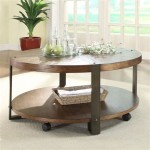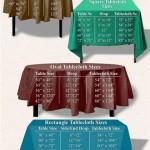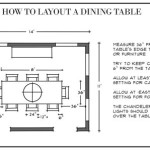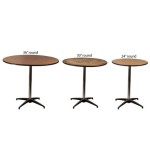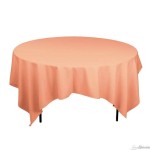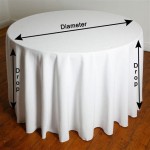Table Cover Roll Paper: A Practical Solution for Event and Hospitality Needs
Table cover roll paper represents a versatile and cost-effective solution for protecting and enhancing tables in various settings. From large banquets and catered events to everyday use in restaurants and cafes, this product offers a practical and hygienic way to manage table surfaces. Its disposability minimizes cleaning efforts while providing a fresh and presentable look for each new seating. The wide range of materials, sizes, and design options available ensures that table cover roll paper can be tailored to meet specific aesthetic and functional requirements.
The primary function of table cover roll paper is surface protection. It acts as a barrier against spills, stains, scratches, and other potential damage that can occur during meals or activities. This is particularly important in high-traffic environments where quick turnover and efficient cleanup are essential. By preventing damage to the underlying table, the use of table cover roll paper extends the lifespan of the furniture and reduces the need for frequent repairs or replacements. Furthermore, it contributes to a cleaner and more sanitary environment, as it eliminates the accumulation of food particles and other debris that can harbor bacteria or allergens.
Beyond its protective qualities, table cover roll paper offers a significant aesthetic benefit. It provides a clean and uniform surface that can enhance the overall ambiance of a dining area or event space. The availability of different colors, patterns, and textures allows for customization to match specific themes or branding. Whether it's a simple white cover for a formal dinner or a vibrant, patterned design for a children's party, table cover roll paper can contribute to a visually appealing and inviting atmosphere.
Material Composition and Types of Table Cover Roll Paper
The effectiveness and suitability of table cover roll paper are heavily reliant on its material composition. Several different materials are commonly used, each offering distinct advantages in terms of durability, absorbency, and cost. Understanding these differences is crucial for selecting the right type of table cover roll paper for a particular application.
One of the most common materials is paper. Paper-based table covers are generally lightweight and economical, making them ideal for high-volume, short-term use. They provide a basic level of protection against spills and crumbs and are easily disposable. However, paper table covers may not be suitable for situations where heavy spills or sharp objects are likely to be encountered. Different grades of paper are available, with thicker and more absorbent options providing improved performance.
Plastic table cover roll paper is another popular choice, offering enhanced durability and water resistance compared to paper. Plastic table covers are typically made from polyethylene or similar materials, which are impervious to liquids and capable of withstanding more wear and tear. They are suitable for both indoor and outdoor use and can be easily wiped clean. However, plastic table covers may not be as environmentally friendly as paper options, as they can take longer to decompose. Recycled plastic options are available to mitigate this concern.
A composite material is becoming increasingly popular, combining the benefits of both paper and plastic. These table covers typically consist of a paper base coated with a thin layer of plastic or other water-resistant material. This construction provides a balance of absorbency, durability, and cost-effectiveness. Composite table covers are suitable for a wide range of applications, from casual dining to more formal events.
Finally, non-woven fabrics, often made from polypropylene, offer a more premium alternative. These fabrics are durable, absorbent, and resistant to tearing. They provide a cloth-like feel and appearance, making them suitable for upscale events and dining establishments. Non-woven table covers can be reused multiple times if properly cleaned, offering a more sustainable option compared to disposable materials.
Factors to Consider When Selecting Table Cover Roll Paper
Choosing the appropriate table cover roll paper involves carefully considering several factors to ensure it meets the specific needs of the intended application. These factors include the type of event, the expected level of usage, the desired aesthetic, and budgetary constraints. Taking these elements into account will help to optimize the value and performance of the table cover roll paper.
The type of event or occasion plays a significant role in determining the appropriate material and design. For formal events such as weddings or corporate banquets, a higher-quality, more elegant table cover may be preferred, such as a non-woven fabric or a composite material with a sophisticated pattern. For casual events or high-volume settings like picnics or cafeterias, a more economical option like paper or plastic may be sufficient.
The expected level of usage is another important consideration. In areas with high turnover, such as restaurants or food courts, a disposable table cover that can be quickly replaced between customers is essential. In contrast, for events with longer seating times or less frequent changes, a more durable and reusable option may be more practical. The anticipated frequency of spills and messes should also be considered when selecting the appropriate material.
Aesthetic considerations are crucial for maintaining a visually appealing environment. The color, pattern, and texture of the table cover should complement the overall décor and theme of the event or setting. Neutral colors like white or ivory are often used for formal occasions, while brighter colors and patterns may be more appropriate for casual or festive events. The availability of custom printing options allows for further personalization and branding opportunities.
Budgetary constraints are always a factor in purchasing decisions. While high-quality table covers offer enhanced durability and aesthetics, they also come at a higher cost. Balancing the desired level of performance with the available budget requires careful consideration of the trade-offs between different materials and features. Purchasing in bulk can often result in cost savings, especially for high-volume users.
Applications and Benefits Across Various Industries
Table cover roll paper finds application across a wide spectrum of industries, demonstrating its versatility and adaptability. From hospitality and catering to healthcare and education, the benefits of using this product are significant and far-reaching. The specific applications and benefits vary depending on the industry and the specific needs of the organization.
In the hospitality industry, table cover roll paper is a staple for restaurants, cafes, and hotels. It provides a clean and sanitary surface for dining, protecting tables from spills, stains, and scratches. The disposability of many table cover options simplifies cleanup and reduces labor costs. The wide range of colors and patterns available allows for customization to match the restaurant's décor and branding. Moreover, using table cover roll paper contributes to a positive dining experience for customers, enhancing their perception of cleanliness and professionalism.
The catering industry relies heavily on table cover roll paper for events of all sizes. From small gatherings to large banquets, this product provides a convenient and cost-effective way to cover tables and create a visually appealing setting. Disposable table covers simplify setup and cleanup, allowing caterers to focus on other aspects of event management. The availability of different materials and designs enables caterers to tailor the table settings to the specific theme and style of each event. Furthermore, using table cover roll paper helps to maintain hygiene and sanitation standards, ensuring a safe and enjoyable dining experience for guests.
In the healthcare sector, table cover roll paper plays a crucial role in maintaining a clean and sterile environment. It is commonly used in hospitals, clinics, and nursing homes to cover examination tables, treatment areas, and dining surfaces. The disposable nature of table cover roll paper helps to prevent the spread of infections and minimizes the risk of cross-contamination. It also provides a comfortable and hygienic surface for patients. In addition to its functional benefits, the use of table cover roll paper contributes to a professional and reassuring atmosphere, enhancing patient confidence and well-being.
Educational institutions also benefit from the use of table cover roll paper. It is commonly used in classrooms, cafeterias, and event spaces to protect tables from spills, stains, and scratches. Disposable table covers simplify cleanup and reduce the risk of damage to furniture. The availability of different colors and patterns allows for customization to match the school's colors or to create a more engaging learning environment. Moreover, using table cover roll paper helps to maintain hygiene and sanitation standards, promoting a healthy and safe environment for students and staff.
Beyond these core industries, table cover roll paper finds applications in various other sectors, including retail, manufacturing, and transportation. Its versatility and adaptability make it a valuable tool for protecting surfaces, maintaining cleanliness, and enhancing aesthetics in a wide range of settings.

40 X 300 17 White Embossed Paper Roll Table Cover

White Linen Like Paper Table Cover Rolls My

40 X 100 Plain White Paper Table Cover 1 Roll

Disposable Paper Tablecloth Roll

Hoffmaster White Plastic Table Cover Roll 300ft Com

Brown Paper Table Cover 40 X 300 60 Roll
Hoffmaster Paper Roll Tablecover Bright White Long S

Hoffmaster White Disposable Plastic Roll Table Covers 40 In X 300 Ft Hfm114000 The Home Depot

Snowflake Plastic Tablecloth Roll 100 Feet Partyglowz Com

Craft And Party 54 X 300 Ft Plastic Table Cover Roll For Banquet Picnic Kids Activities Any Size Shape Com
Related Posts

